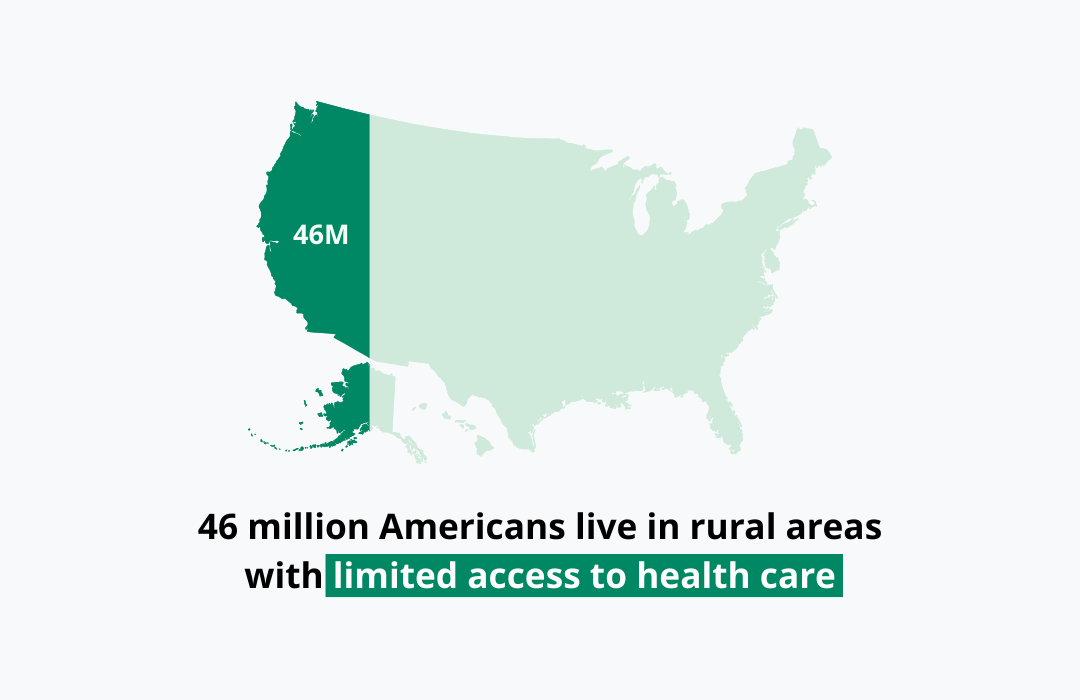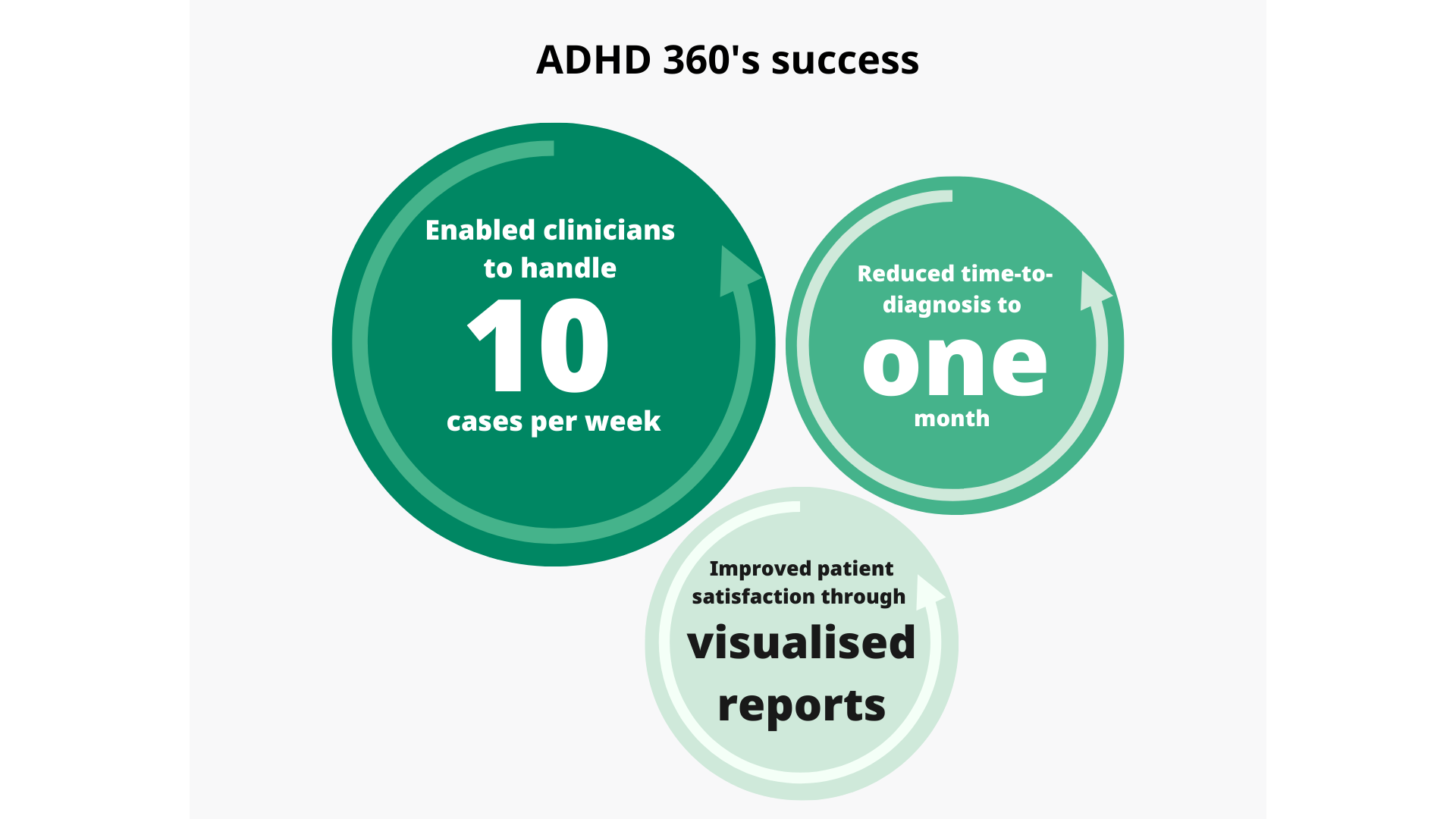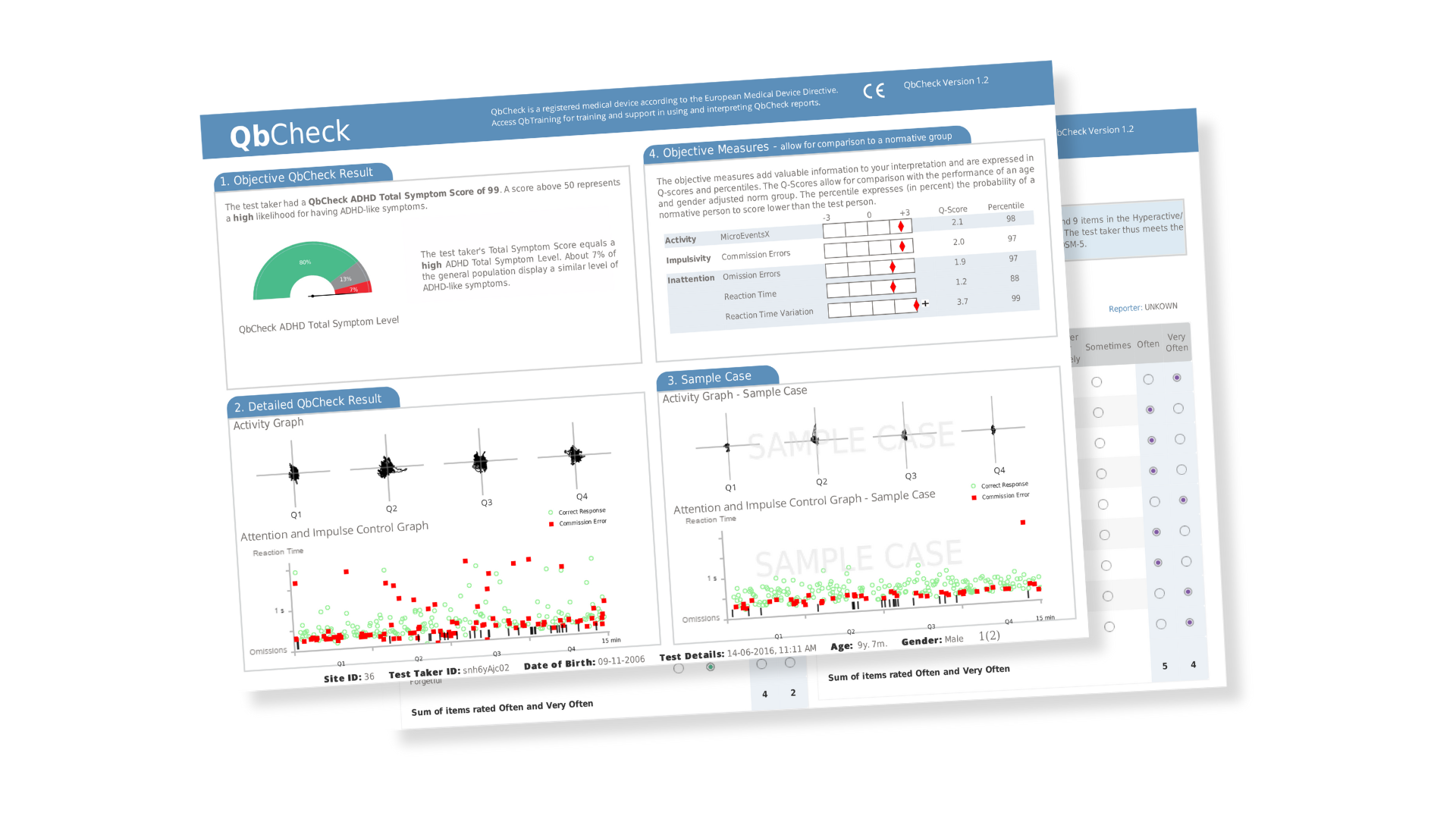ADHD is a global issue and healthcare providers face common challenges; providing equitable patient experiences across boundaries, reducing wait times, streamlining care pathways, and finding cost-effective solutions to ADHD diagnosis and testing are particularly universal problems.
Key takeaways
ADHD care varies significantly by region. From decentralized systems of America and Sweden to the more centralized model of care in the UK, there exist inconsistencies in diagnoses, wait times, and patient experiences.
-
Long wait times and limited clinician capacity are widespread challenges across all three countries, exacerbated by clinician shortages and complex referral systems
-
Objective ADHD testing tools, like QbCheck and QbTest, provide a scalable and cost-effective solution that streamlines diagnosis
- Across all settings, integrating objective testing into ADHD pathways can support clinician confidence, improve patient outcomes, and enable more equitable, timely care at scale
How is ADHD assessed, managed, and treated in the US?
ADHD care in the US is largely decentralized. National bodies such as the American Academy of Pediatrics (AAP) offer clinical guidelines and recommendations for ADHD diagnosis and treatment. However, implementation varies widely at the state level and more locally from clinic to clinic.
ADHD evaluation may fall under the remit of a range of healthcare professionals, including pediatricians, psychologists, psychiatrists, and neurologists. Patients may be referred to specialist mental health services for evaluation

What are the key challenges for clinicians and patients in the US around ADHD care?
Because there is no standardized model of care, patient experiences can vary significantly depending on geography and the type of provider. Receiving a timely assessment and diagnosis can also be difficult. HRSA data shows that as of August 2024, over one third (122 million) of the US population were living in a Mental Health Professional Shortage Area. This shortage of healthcare professionals contributes to lengthy wait times for assessment, particularly where referrals are required.
For larger, multi-site healthcare providers, particularly those operating interstate or across large intra-state geographies, managing patient expectations and ensuring a consistent approach to diagnosis and care can be a challenge.
Cost-effective solutions to ADHD evaluation and care in the US
The use of an objective test within an ADHD care pathway can offer several benefits for American clinicians and help address disparities in approach. It is the simplest yet highly efficient, cost-effective solution to the challenges mentioned above.
Objective ADHD tests can help save diagnostic time
Some clinics currently refer patients externally for ADHD evaluation. There can be lengthy waits of several months for these neuropsychological assessments. By adding objective testing to an ADHD pathway, clinicians can reduce the need for external referrals.
The data from objective tests can improve differentiation between ADHD and other conditions during diagnosis. This addition of objective data can increase clinician confidence and therefore support more clinicians to undertake ADHD evaluations in-clinic. Reducing the need for external neuropsychological assessments can improve patient experience and reduce the time for diagnosis.
Remote ADHD testing services can reduce administrative costs
QbCheck enables patients to be evaluated for ADHD symptoms at home, reducing the need to travel. This means a reduction in staffing costs as a result of time saved in making appointments and administering tests. Virtual care provision is a growing market in the US. A 2024 study found that nearly 39% of surveyed US adults had used telehealth during the previous year.
Virtual care providers can benefit from reduced administrative costs by using an API to automate data processes when using QbCheck for ADHD evaluation. Minimizing manual data entry and paperwork administration represents a valuable time and cost-saving opportunity.
Scaling opportunities for multi-site providers to standardize care
Objective testing offers opportunities for large multi-site care providers to offer a standardized approach to ADHD evaluation. This ability to standardize a patient’s experience, regardless of where they present for evaluation, could support providers seeking to establish a reputation for consistent and quality patient care. There may also be cost savings from adopting a standardized approach and rolling out across all sites e.g., reductions in training costs, admin, and back-office support.
The UK perspective: adding cost-effective tools to ADHD care pathways
The UK has a centralized approach to healthcare, underpinned by the presence of the NHS, which provides a publicly funded model of healthcare across England, Scotland, Wales, and Northern Ireland. National bodies such as the National Institute for Health and Care Excellence (NICE) have a role in setting strategic guidance for ADHD diagnosis and care.
Responsibility for ADHD assessment may rest with GPs, pediatric services, child and adolescent mental health services (CAMHS), or adult mental health services.
What are the key challenges for clinicians and patients in the UK around ADHD care?
Despite the national approach to healthcare, local commissioning decisions and capacity can mean patients experience very different access to ADHD services depending on where they live.
Long wait times may be a concern in some areas. The nationalized model of healthcare also means that patients can have strong expectations of equitable access to healthcare and support. This can lead to higher scrutiny where differences are observed.
Cost-effective solutions to ADHD evaluation and care in the UK
Adding an objective ADHD test to care pathways could support UK clinicians to reduce wait times and allow time and cost savings.
Speed up ADHD evaluations
Several studies have highlighted the effectiveness of objective testing in reducing both the number of appointments to reach a diagnosis and the wait time:
- An East Midlands NHS demonstrator project reported a median reduction from assessment to diagnosis of 153 days.
- The Greenwich ADHD team experienced a 55% reduction in waiting time and a 38% reduction in their waiting list.
- The North Staffordshire CAMHS service have reduced their waiting time from 18-24 months to 0-12 weeks, with no waiting list.
Adding objective measures to ADHD evaluations can enable clinicians to see more patients and reduce backlogs, leading to efficiencies in the pathway.
Objective testing complements existing NHS pathways
Care pathways often develop and evolve over many years, and there can be concerns over how new technologies or processes can be added. However, objective testing has been successfully added to NHS care pathways as evidenced in studies like the Focus ADHD National Evaluation report.
In 2024, NICE recommended our objective test as part of the diagnosis process for ADHD in those aged 6-17, further evidencing the scope for adding to NHS care pathways.
Reduce the need for repeat assessments and referrals
A 2018 study found that a combination of subjective measures and objective testing led to an accuracy of 89.5% in adults and 86.7% in children when assessing ADHD symptoms.
The LEAP project in the Wirral is an excellent example of the potential benefits of being able to accurately assess ADHD symptoms in primary care. By adding objective ADHD tools to primary care pathways, GPs and mental health workers can make assessments without the need for referral. This has allowed low-risk patients to be assessed and given results (often in a single visit to their GP) whilst relieving pressure on secondary care services from referrals.
Time and cost savings, and return on investment
Following the introduction of objective testing to the pathway, the Health Innovation Network Focus ADHD programme reports the following (April 2020 – March 2024):
- Over 41,500 clinical appointments saved
- Over 95,000 hours of healthcare capacity released
- An estimated £38.5M of NHS savings achieved
In the program evaluation, a return on investment (ROI) of £84,460 (median result per trust) was calculated. This presents a significant opportunity for UK healthcare providers managing stretched budgets to deliver consistent ADHD care models cost-effectively.
A more equitable model of ADHD care
As of March 2024, 79 NHS trusts were using an objective test (QbTest) for ADHD assessment. This represents around three-quarters of all English trusts providing ADHD services and a patient group of over 71,000 children and young people.
This is a significant move towards establishing a more consistent approach to ADHD care within England. The opportunity now is to continue this rollout of objective testing with the goal of a more equitable pathway for ADHD care and improved patient outcomes, regardless of location.

Mental healthcare in Sweden: ADHD evaluation and management in 2025
Sweden's healthcare system is decentralized, with healthcare managed by regional councils, local authorities, and municipalities. The central government sets overarching guidelines and policies; however, the regions are responsible for day-to-day operations.
ADHD assessment may be carried out by several healthcare professionals, including child and adolescent psychiatrists, psychologists, pediatricians, and specialist nurses. Referrals may be made from primary care or schools.
What are the key challenges for clinicians and patients in Sweden around ADHD care?
The assessment, diagnosis, and treatment of ADHD care can vary between regions. For clinic groups operating across regions, providing standardized and consistent assessment and care models across areas is a key consideration.
Cost-effective solutions to ADHD evaluation and care in Sweden
Opportunities exist to support Swedish clinicians with the assessment and treatment of ADHD; here are some of the potential benefits of this approach.
Standardizing ADHD care across Nordic regions
The National Board of Health and Welfare (Socialstyrelsen) has published guidelines for ADHD care. These guidelines help Swedish regions to organize resources and prioritize interventions with some consistency. However, whilst there are some similarities in how ADHD healthcare is structured and delivered across regions, there are some significant differences.
As an example, how long children and adolescents need to wait for an assessment varies greatly between regions. A Socialstyrelsen report also showed large differences between regions in ADHD treatments and the prescription of ADHD medications.
Objective ADHD testing technologies like QbCheck present clinics with an option for a more standardized assessment methodology. The use of a single, consistent, technology to support diagnosis and monitor treatment effects could help clinics to provide patients with a singular, high-quality experience of ADHD care, regardless of the region they live in.
Support national guidelines for ADHD diagnosis and treatment
Swedish national guidelines advise that ADHD should not be diagnosed solely from computerized attention tests. This aligns with the intended use of QbCheck, which is designed to be used alongside subjective measures such as rating scales and clinical interview.
Where objective tests have a role to play is in supporting clinics to make a timely and accurate diagnosis of ADHD based on a comprehensive evaluation of a patient’s symptoms (including subjective and objective measures).
Medication management with schoolchildren
Approximately 75% of Swedish schoolchildren aged 10 – 17 who receive an ADHD diagnosis, begin medication treatment.
Studies have shown that objective measures can help clinicians get a better understanding of ADHD treatment efficacy and monitor treatment titration. This provides clinicians with the opportunity to assess treatments and their effectiveness following a new prescription. There may also be cost savings for clinics from being able to use a single tool that can support both testing and medication management, rather than relying on multiple technologies. There are also potential state cost savings from patients receiving the correct dosage and medication type more quickly, reducing the need for trying different combinations that are less effective.
Objective testing: a cost-effective solution across geographies
ADHD is assessed, treated, and managed differently depending on national and regional policies. Whilst individual countries or regions may be tackling ADHD care differently, there are universal challenges – long waits for diagnosis, pressure on healthcare services, and the financial challenge of meeting testing demand.
Objective tests for ADHD, like QbCheck, can offer a cost-effective solution. Adding objective tests to care pathways can help clinicians streamline assessment and diagnosis processes, saving clinicians time and providing opportunities for more standardized and consistent care models.

